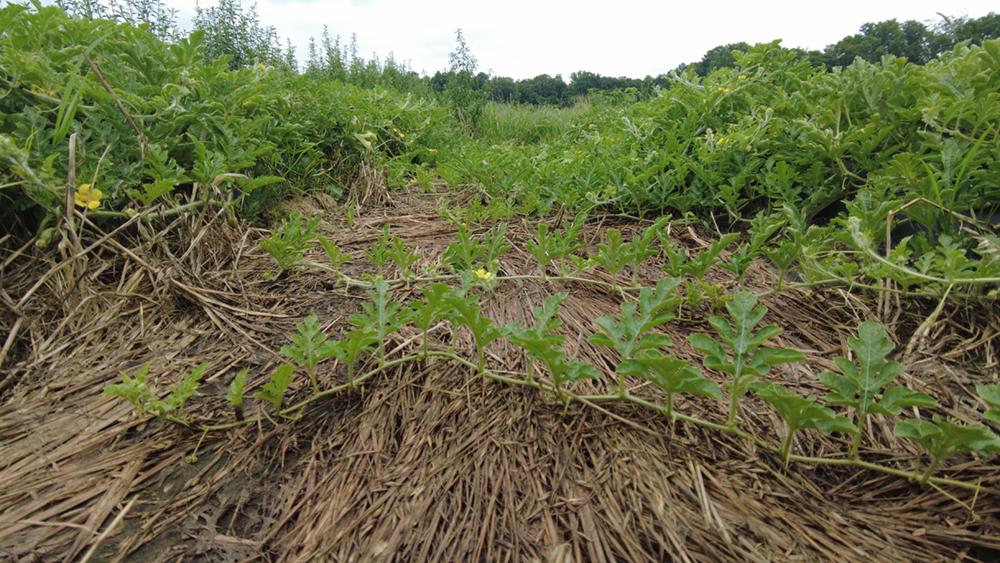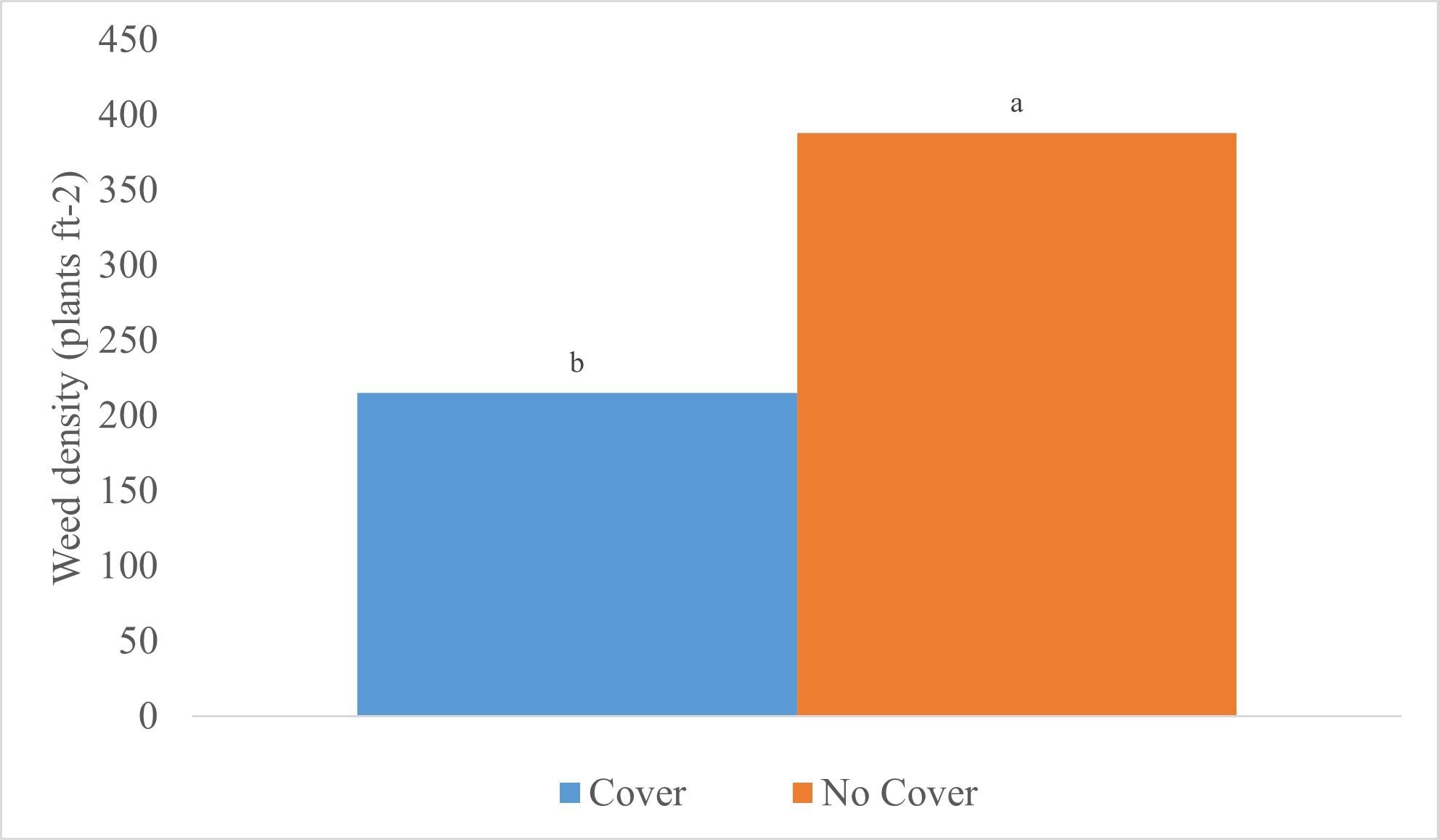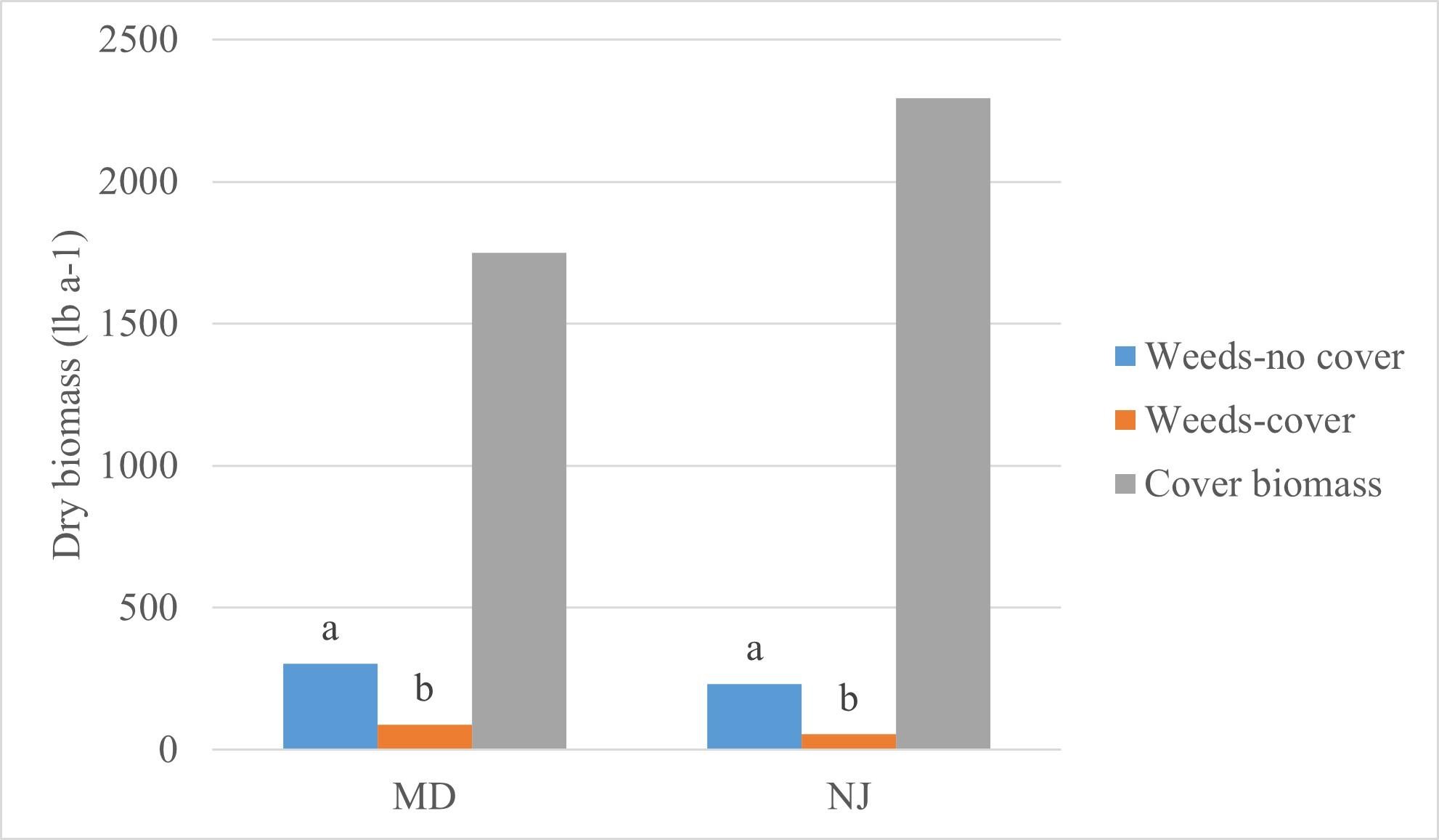
Figure 1. Row-middle weed suppression with an oat cover crop in watermelon. Photo credit: Kurt Vollmer, University of Maryland.
Evaluating Spring-Seeded Cover Crop Termination Timing for Weed Control in Watermelon
Row-middle weed management in plasticulture vegetable systems can be challenging. Herbicides are relied upon heavily for weed control, but may be ineffective against target weeds or fail to provide season-long control. The use of spring-seeded grass cover crops has been studied as an additional tool for weed management. Cover crops aid in weed suppression through direct competition or physical suppression of emerging weeds. While cover crops alone cannot kill weeds, when paired with an effective postemergence herbicide, weed control can be greater than either tactic alone. Much of this is dependent on achieving enough cover crop biomass, but cover crops may hinder cash crop growth if allowed to grow for too long. Previous research in Maryland and New Jersey showed that an oat cover crop terminated at the heading stage (Feekes 10.1-10.5) produced sufficient biomass for weed suppression. Therefore, a study was conducted to evaluate weed control and watermelon yield in response to the termination timing of an oat cover crop planted between plasticulture rows.
Trials were conducted at the University of Maryland Wye Research and Education Center in Queenstown, MD and cucumber trials at the Rutgers Agricultural Research and Extension Center in Bridgeton, NJ in 2023. The study evaluated weed control and crop yield due to the presence or absence of an oat cover crop, and the growth stage at which the cover crop was terminated (boot-[Feekes 9-10], or heading). Plastic was laid on April 12 at the New Jersey location, and April 13 at the Maryland location. ‘Forage Maker’ oats were seeded at 138 lb./A on April 14 at both locations. ‘Captivation’ watermelons were transplanted on May 26 in Maryland and ‘Cracker Jack’ watermelons on June 2 in New Jersey. Cover crops were terminated by crimping once with a tractor pass (John Deere 3150 [MD], John Deere 5075M [NJ]) followed by a shielded application of Gramoxone SL 2.0 (paraquat) at 2 pt/A + nonionic surfactant at 0.25% v/v at the boot stage on June 19 (NJ) and June 20 (MD), or at the heading stage on June 29 (NJ) and July 6 (MD).
Results
Oat growth stage at termination had no effect on weed density, weed biomass, or watermelon yield. An oat cover crop reduced weed seed density 45% compared to no cover crop (Fig. 1,2), and weed biomass 74% (Fig. 3) by late July/early August. The lack of differences in termination timing may be attributed to achieving sufficient cover crop biomass for weed suppression at the boot stage. Cover crop biomass ranged from 1,750 to 2,300 lb./A across locations and termination dates. The presence of an oat cover crop nor its termination date affected neither total yield, total fruit number, nor total marketable fruit number (Table 1). However, marketable fruit weight was 20% higher in cover crop treatments compared to no cover treatments.


| Head stage | Boot stage | No oats | Oats | |
|---|---|---|---|---|
| Total yield (lb./ A) | 133 | 129 | 128 | 134 |
| Total fruit (no./A) | 29 | 30 | 30 | 30 |
| Total marketable fruit (no./A) | 21 | 23 | 20 | 24 |
| Marketable fruit weight (lb.) | 17 | 17 | 15* | 18* |
*Indicates significant difference according to Tukey’ HSD (⍺=0.05)
Key Points
- Results agreed with previous studies showing that that the inclusion of a spring-seeded grass cover crop, such as spring oats, can complement weed control programs in plasticulture vegetable production.
- An oat cover crop can serve a similar role as a soil-applied herbicide - inhibiting weed emergence and growth.
- Although an effective postemergence herbicide was used for both cover and no cover treatments, overall weed control was better when combined with an oat cover crop.
- Attaining sufficient cover crop for late season weed suppression is essential, but it can potentially interfere with cash crop development. These results indicate that an oat cover crop can be terminated at an earlier growth stage, reducing the competition period between the cover and cash crop.
- Addition research is needed to assess the optimal timing for cover crop termination without impeding weed suppression or crop yield.
Acknowledgements
Funding for this study was provided by National Institute of Food and Agriculture, Crop Protection and Pest Management, Applied Research and Development Program through award #2020-70006-33016. The authors would like to than the farm and weed science crews and the UMD Wye Research and Education Center and the Rutgers Agricultural Research and Extension Center.
Commercial products are mentioned in this article solely for the purpose of providing specific information. Mention of a product does not constitute a guarantee or warranty of products. Reference to commercial products or trade names is made with the understanding that no discrimination is intended and no endorsement by University of Maryland Extension is implied.
This article is featured in the Vegetable and Fruit News, Vol. 16, Issue 1.
Vegetable and Fruit News is a statewide publication for the commercial vegetable and fruit industries and is published monthly during the growing season (April through October). Subscribers will receive an email with the latest edition.
Subscribe